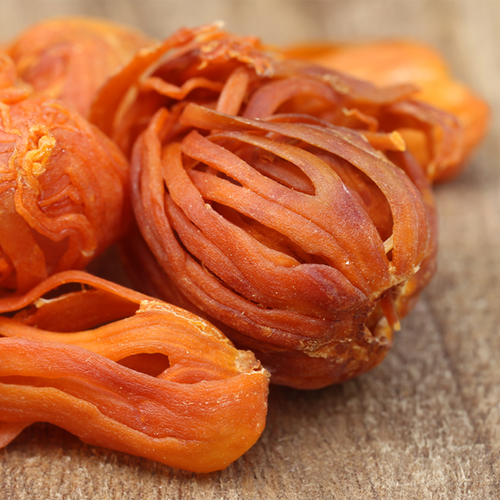
Background
Mace is used for pain, stomach problems, and many other conditions, but there is no scientific evidence to support these uses.
Safety Safety definitions
There isn't enough reliable information to know if mace is safe to use in higher doses.
Mace contains the chemical myristicin which has been linked to hallucinations and other mental side effects. People who have taken larger doses of nutmeg, which also contains myristicin, have experienced nausea, dry mouth, dizziness, irregular heartbeat, agitation, and hallucinations. Because mace also contains myristicin, in theory, it might cause these same side effects.
When applied to the skin: There isn't enough reliable information to know if mace is safe or what the side effects might be.
Special Precautions & Warnings:
Pregnancy and breast-feeding: Mace is POSSIBLY UNSAFE when taken by mouth in doses larger than amounts found in foods when pregnant. It might cause miscarriages or birth defects. There isn't enough reliable information to know if mace is safe to use in doses larger than amounts found in foods when breast-feeding. Stay on the safe side and stick with food amounts.Weakened immune system: Mace might reduce immune function. In theory, taking large doses of mace can worsen immune function for people who already have a weakened immune system.
Effectiveness
- Loss of bladder control (urinary incontinence). Early research shows that taking mace for 3 months, while also doing pelvic floor training (kegels), might help with bladder control more than doing kegels alone.
- A mild form of gum disease (gingivitis).
- Cancer.
- Diarrhea.
- Increasing menstrual flow.
- Intestinal gas.
- Kidney disease.
- Menstrual cramps (dysmenorrhea).
- Pain.
- Producing hallucinations.
- Stomach problems.
- Vomiting.
- Other conditions.
Dosing & administration
Interactions with pharmaceuticals
Medications changed by the liver (Cytochrome P450 1A2 (CYP1A2) substrates)
Interaction Rating=Moderate Be cautious with this combination.
Some medications are changed and broken down by the liver. Mace might increase how quickly the liver breaks down some medications. Taking mace along with some medications that are changed by the liver can lead to a variety of effects and side effects. Before taking mace talk to your healthcare provider if you take any medications that are changed by the liver.
Some of these medications that are changed by the liver include clozapine (Clozaril), cyclobenzaprine (Flexeril), fluvoxamine (Luvox), haloperidol (Haldol), imipramine (Tofranil), mexiletine (Mexitil), olanzapine (Zyprexa), pentazocine (Talwin), propranolol (Inderal), tacrine (Cognex), theophylline, zileuton (Zyflo), zolmitriptan (Zomig), and others.
Medications that decrease the immune system (Immunosuppressants)
Interaction Rating=Moderate Be cautious with this combination.
Mace might decrease the activity of the immune system. Taking mace along with some medications that also decrease the immune system might increase these medications' effects.
Some medications that decrease the immune system include azathioprine (Imuran), basiliximab (Simulect), cyclosporine (Neoral, Sandimmune), daclizumab (Zenapax), muromonab-CD3 (OKT3, Orthoclone OKT3), mycophenolate (CellCept), tacrolimus (FK506, Prograf), sirolimus (Rapamune), prednisone (Deltasone, Orasone), and other corticosteroids (glucocorticoids), and others.
Phenobarbital (Luminal)
Interaction Rating=Moderate Be cautious with this combination.
The body breaks down phenobarbital (Luminal) to get rid of it. Mace might increase how quickly the body breaks down phenobarbital (Luminal). Taking mace along with phenobarbital (Luminal) might decrease the effectiveness of phenobarbital (Luminal).
Sedative medications (CNS depressants)
Interaction Rating=Major Do not take this combination.
Mace might cause sleepiness and drowsiness. Medications that cause sleepiness are called sedatives. In theory, taking mace along with sedative medications might cause too much sleepiness.
Some sedative medications include clonazepam (Klonopin), lorazepam (Ativan), phenobarbital (Donnatal), zolpidem (Ambien), and others.
Interactions with herbs & supplements
Herbs that contain a chemical called safrole: Mace contains safrole, which has been linked with liver cancer in mice. Using mace along with other herbs that also contain safrole might increase the risk of getting liver cancer. Some of these herbs are basil, camphor, and cinnamon.




